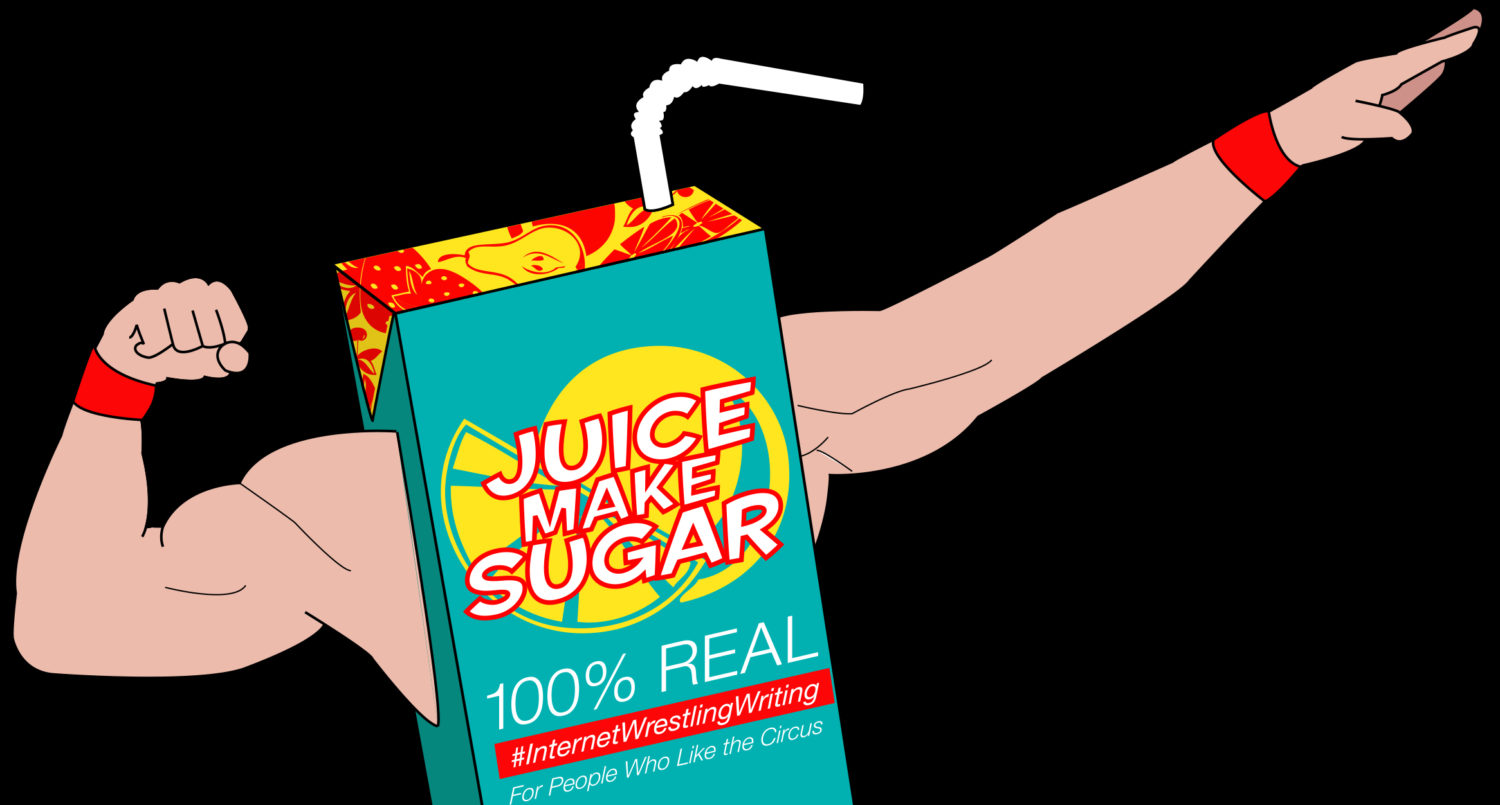After spending the last two months collecting our thoughts, we’re bringing back our (patent-pending) Wrestler of the Week series. This month we are looking at the greatest heel “non-playable characters” in the history of the business. While being able to work does not preclude someone from being invited to the party, we’ll be looking at performers who made their greatest impact on the periphery of the squared circle and not inside of it.
Up first is the man, the myth, the legend: Bobby “The Brain” Heenan.
If it were just athleticism we were after when we watch wrestling, we would probably just watch something legitimate, like badminton or figure skating. If it was drama or comedy, we’d probably spend more time in the theater or on Netflix instead of glued to the WWE Network.
The real reason we watch is because of that magical, ethereal emotion identified only by crowd reaction, something known since the performers were carnies as “heat.” Heat is hard to nail down, but whatever it is, Bobby “The Brain” Heenan knew better than perhaps anyone who has ever lived how to turn it up without burning the place to the ground..
From Gotch and Hackenschmidt to Thesz and Rogers to Flair and Hogan to Rock and Austin, wrestling history has always been told as a sequence of era-defining personalities. And while Bobby “The Brain” was never the centerpiece of a promotion or the World’s Champion, he had personality and charisma that defined what it was to be big time.
That Heenan is the greatest manager of all time is a widely accepted fact among wrestling fans whose memory predates the modern era, largely because “The Brain” became the defining archetype of two completely different and equally significant styles. Heenan was equally adept at taking a wrestler completely lacking in personality (Bobby Duncum, Big John Studd, etc.) and make fans care about seeing that person lose, or complimenting a world-class personality (Nick Bockwinkel, Andre the Giant, etc.) to turn an A- heel into an A+.
Whether he was custodian of the outhouse or chamberlain of the castle he used his mouth and body language to make himself the principal agitator on almost any card, all without ever forgetting he was the sauce, not the steak. He understood that if this fake wrestling thing was going to make money, the big heel and the big babyface both had to stay over. To get the heel over, Heenan would act bombastic and brash. To get the babyface over, he would act cowardly and cartoonish. In the hands of most men, the juxtaposition of the two roles would seem schizophrenic or beyond belief, but The Brain had DeNiro-like range that allowed him play both Vito Corleone and Jack Byrnes on the same night.
Heenan’s quick wit ultimately led him to evolve beyond the traditional manager’s role and become a color commentator/talking head. From a certain perspective, this was exhibit one in the case of “Vince McMahon hates wrestling.” McMahon took Heenan, who represented the apex of a particular wrestling trope, and transformed him into a third rate Ed McMahon (no relation, kids), a vaudevillian stooge who traded in puns and one-liners. But McMahon knew what fans were looking for and Heenan was a pro, somehow taking a decades-old pseudo-Borscht Belt schtick and turning it into an integral part of the Hulkamania era.
As a heel color commentator, Heenan was put in the strange position of being conspicuously smarter and, well, better than his partners. While he stooged for Gorilla Monsoon out of respect and friendship, there was no question in any canny viewer’s mind who the smarter, savvier member of the broadcast team was. During the final chapter of Heenan’s career in WCW, this issue was even more evident, as the likes of Eric Bischoff and Steve McMichael couldn’t keep up with Bobby if they were wearing ACME rocket boots. Heenan was smart and clever, but without a righteous, equally smart foil, The Brain was reduced to a giant ball of snark. While this was entertaining in small doses, at the end of the day, a snarky know-it-all heel calling a wrestling show dominated by snarky know-it-all heels quickly undermined the whole heel-face balance that Heenan had spent most of his career masterfully maintaining.
It truly is fitting that Bobby Heenan’s career in wrestling came to an end just at the turn of the century. Heenan represented the well-maintained archetypes of the territory era, tropes that had been preserved for decades because they worked and drew money. As wrestling had evolved from a butts-in-seats business to an eyes-on-the-screen business, Heenan’s character and antics had grown increasingly dated, and frankly, his investment and engagement in the product he called waned.
That WWE fans watch Paul Heyman managing Brock Lesnar and say, “Heyman is one of the greatest managers of all time!” is an insult to Bobby Heenan. He could talk as well as Heyman to get over his heel charges, but also bump his ass off to sell the big moment for the babyface in a way that Heyman is simply not capable of. Like Tom Seaver or George Carlin, Bobby Heenan was the master of a long tradition. He saw what the most successful men before him had done and refined his act until he was the best of any of them. Just as all starting pitchers are all now imitators of Seaver and all stand-up comedians are imitators of Carlin, Heenan unwitting became the mold because he was just so good at what he did. He was the perfect wrestling manager, the perfect stooge, and there will truly never be another one like him.


RT @JuiceMakeSugar: #HeenanWeek: Better Know a Heel w/@DavetheMark http://t.co/8TcjjCTAzA
RT @JuiceMakeSugar: #HeenanWeek: Better Know a Heel w/@DavetheMark http://t.co/8TcjjCTAzA
RT @JuiceMakeSugar: #HeenanWeek: Better Know a Heel w/@DavetheMark http://t.co/8TcjjCTAzA